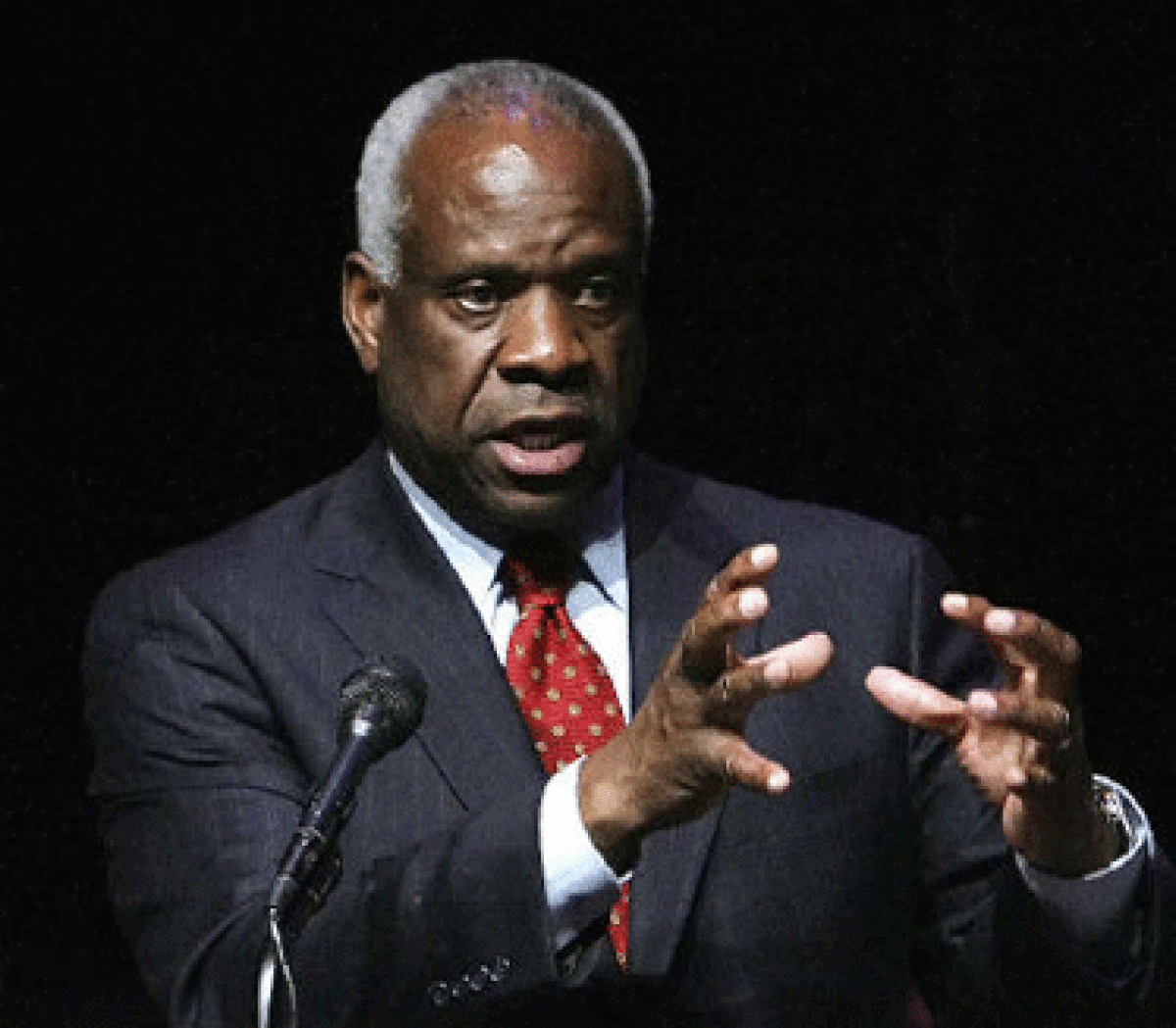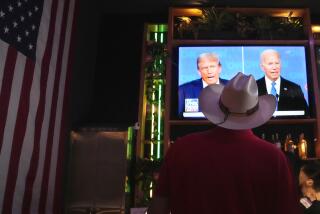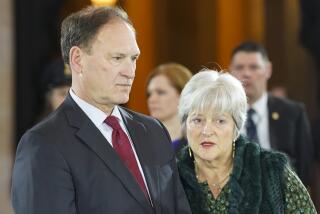Opinion: Clarence Thomas speaks and other notable events from Supreme Court livestream

A lot of reaction to the Supreme Court’s first day of coronavirus-inspired tele-arguments has focused on the fact that the normally silent Justice Clarence Thomas actively engaged in questioning lawyers over the phone. More about that later. But the most important thing about Day One of this departure from protocol was summed up in CSPAN’s chyron: “SUPREME COURT LIVE First Time.”
Before Monday’s argument in a trademark case, only the reporters and a small number of spectators who were allowed into the Supreme Court chamber could listen to arguments in real time, though transcripts of arguments were published on the court’s website the same day and audio was posted at the end of the week.
But, on Monday, Americans could follow along as the justices sparred with lawyers over whether a travel website called Booking.com could obtain federal trademark protection for its name. Although the livestreams are prompted by COVID-19, the court should continue them even after the virus is dispatched.
Monday’s argument wasn’t exactly the same procedure as usual: Instead of a free-for-all in which justices interrupt advocates and sometimes step on one another’s lines, the process was orderly, with Chief Justice John G. Roberts Jr. calling on justices in order of seniority. There were a few glitches, but the process was generally smooth.
What’s the advantage of livestreaming arguments? Besides providing the same sort of accessibility to the court that Congress provides, livestreamed audio — and livestreamed video, which the court also should adopt — means that news organizations can expeditiously incorporate important moments from the argument in same-day news coverage. Some justices see such excerpts as misleading “sound bites.” Obviously news organizations shouldn’t quote justices — or anyone else — out of context, but timeliness is important in attracting the attention of viewers and readers.
It’s unlikely that, even once the coronavirus outbreak ends, the court will approve live video.
But the necessity of conducting oral arguments remotely during the pandemic may be the mother of invention when it comes to livestreaming audio to the public. And perhaps the court will decide that having justices ask questions in order, with the chief justice playing traffic cop, makes sense even for in-person arguments. (The court already has partially addressed the problem of justices interrupting lawyers before they can state their cases. A guide for lawyers updated for this term says justices generally won’t question them during the first two minutes of their presentations.)
If procedures used for tele-arguments were made permanent, we might hear more from Thomas. I am on record as questioning the argument that Thomas’ usual reticence is a betrayal of his duties or evidence of a lack of influence. But if, as some commentators on Twitter suggest, he’s comfortable with a more orderly process, maybe a side benefit would be that we would hear from one of the most provocative thinkers on the court during arguments and not just in his written opinions.
More to Read
A cure for the common opinion
Get thought-provoking perspectives with our weekly newsletter.
You may occasionally receive promotional content from the Los Angeles Times.











